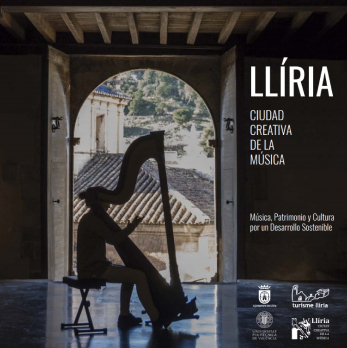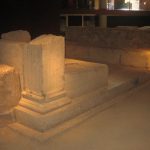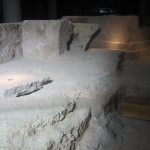Unió Musical
The society Unió Musical de Llíria, as well as its music band, was founded in 1903 after the merger of two previous bands that started their activity in the city during the first decades of the 19th century.
The society is made up of six musical groups, an integrated primary and secondary school, as well as a school for students and a school for musical improvement, where musical and educational values are taught, which have undoubtedly also contributed to Llíria’s recognition as a UNESCO Creative City. The Symphonic Band has won 70 first prizes in national and international competitions.
It is also the band that has won the most first prizes in the International Band Competition of
Valencia, with 46 first prizes and honourable mentions. The Symphonic Band has received numerous distinctions and decorations from national and international institutions. It recorded the music that Carles Santos composed for the 1992 Barcelona Olympics and performed at its closing ceremony.
It also recorded some of the music that Carles Santos composed for the Universal Exhibition in Seville, where he gave a concert. It was the first music band to perform in 1983 at the Teatro Real in Madrid. It has made nine concert tours around various European countries and in 1989 it performed in St. Peter’s Square before Pope John Paul II. In 1978 it was the first Spanish band to tour the USA. It has also made the following international tours: Mexico (1983), Japan (1999), Cuba (2005) and Venezuela in 2008. It has also participated in numerous international festivals such as the Limoux Festival (France) in 2015.
It has recorded more than 25 recordings of different formats. It has also recorded concerts for various national and international radio and television stations. The Symphonic Band has continued to be conducted by such prestigious conductors as Sergiu Celibidache, Antal Dorati, Jesús López Cobos, Enrique Garcia Asensio, Antoni Ros Marbà… In 2013 Zubin Mehta conducted the Symphonic Band in a public concert, being the first time he conducted a band. Over the last decades, master conductors such as Pablo Sánchez Torrella, Manuel Enguídanos Cotanda, Francisco Cabrelles, Rafael Sanz Espert, José Miguel Micó, Enrique Artiga have been regular conductors, and since 2016, Pablo Marqués Mestre has been their regular conductor. The Union Youth Band is conducted by Esteban Espinosa García while the Symphony Orchestra is conducted by Pascual Cabanes Fabra. The society also has a Social Choir directed by Vivián Gutiérrez Abreu, as well as a White Voices Choir.
Another group is the Colla Pastrana de Tabal i Dolçaina with its corresponding school. Musical education The Unió Musical de Llíria is the first musical society in Spain which in 1976 founded a school for compulsory education to integrate musical education, an integration which was officially achieved in 1997, making the school the first integrated centre in our country.
The students continue their training in the School of Students and in the School of Musical Improvement.









